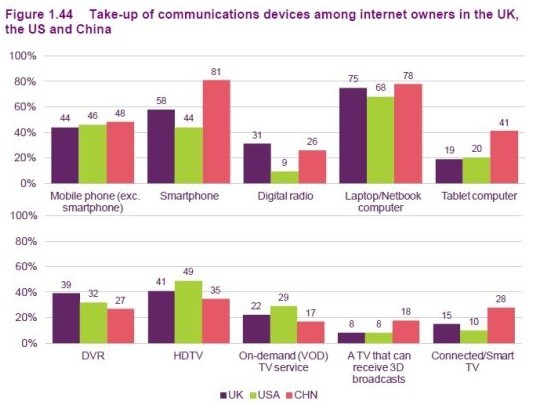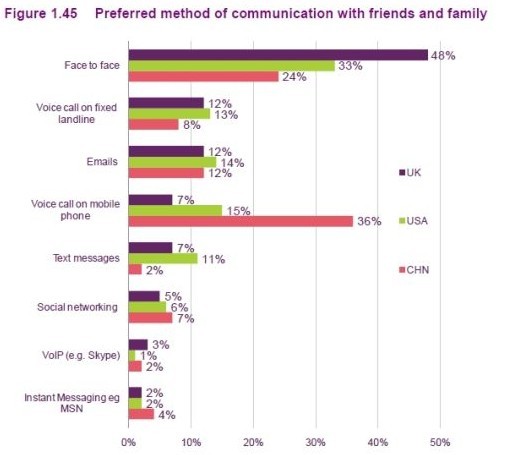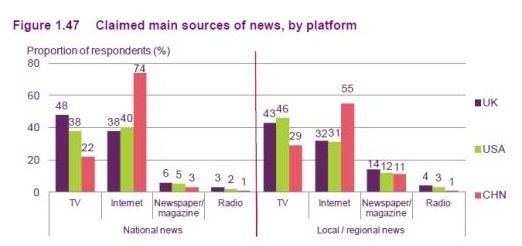The latest Global Communication Market Report from the British Ofcom made a comprehensive research on consumers’ consumption and attitude toward communication services and products in the global market.
The Overview of China
1. Population and Economic Elements
With 1.3 billion population, China has a diversified population structure – 56 minorities, 14 languages and countless dialects. Chinese people live on the vast land, which has been divided into 31 provinces and municipalities.
The economic and social development varies from place to place. Specifically speaking, eastern provinces (including Beijing, Shanghai, Tianjin, Guangzhou, Shenzhen and so on) have higher proportion in employment (48.5%) and GDP ratio (53.1%), which are much higher than that of middle and western districts and northeast provinces.
It is worth mentioning that half of the population lives in the countryside and their annual income is less than 30% of that of citizens. Among 137 countries using Gini Coefficient, China ranked 27 and the USA ranked 42 and the UK ranked 91. That is to say, there is still high inequality in income distribution in China.
2. Provision and Usage of Services
The infrastructure of fixed-line network also varies from place to place. Operators provided with consumers with fibre-optic broadband services in big cities while in most districts, the broadband connection is still based on DSL.
By the end of 2011, the amount of rural netizens was only 136 million. In other words, there is still 82% of rural population that could not access the Internet.
Paralleling that, Chinese penetration of broadband connection is low. Only 39% of families have fixed broadband connection in China. In some middle and western provinces, less than 70% of population has phones.
It is noteworthy that mobile phones are the main products among Chinese consumers. In China, 97% of calls are made by mobile phones. By contrast, in England, only 52% of calls are from mobile phones.
The Difference among Chinese, British and American Consumers
1. Take-up of Communication Devices

The statistics indicates that the percentage of people owning smartphones, laptops and tablets in China is much higher than that in America and the UK. But when considering the internet penetration, the percentage may be lower.
Chinese young and rich class has great interest in those consumer devices, such as iPhone and iPad. In China, the usage of cable TV is also experiencing high increase with the annual growth surpassing 678%.
2. Preferred Methods of Communication

In China, people prefer to use phones to make calls. By contrast, face to face communication is more popular in America and the UK.
This phenomenon could be attributed to the cultural difference. And another explanation is that the investigated groups are too young and young people usually tend to use mobile phones. Moreover, the high coverage of mobile Internet stimulates the usage of mobile phones.
3.Claimed Main Sources of News

74% Chinese netizens acquire news online while the proportions of America and the UK are 40% and 38%. 48% of American netizens and 38% of British netizens choose TV as the news channel but the proportion in China is only 22%. It seems that the Internet is a much more important news channel in China compared with America and the UK.